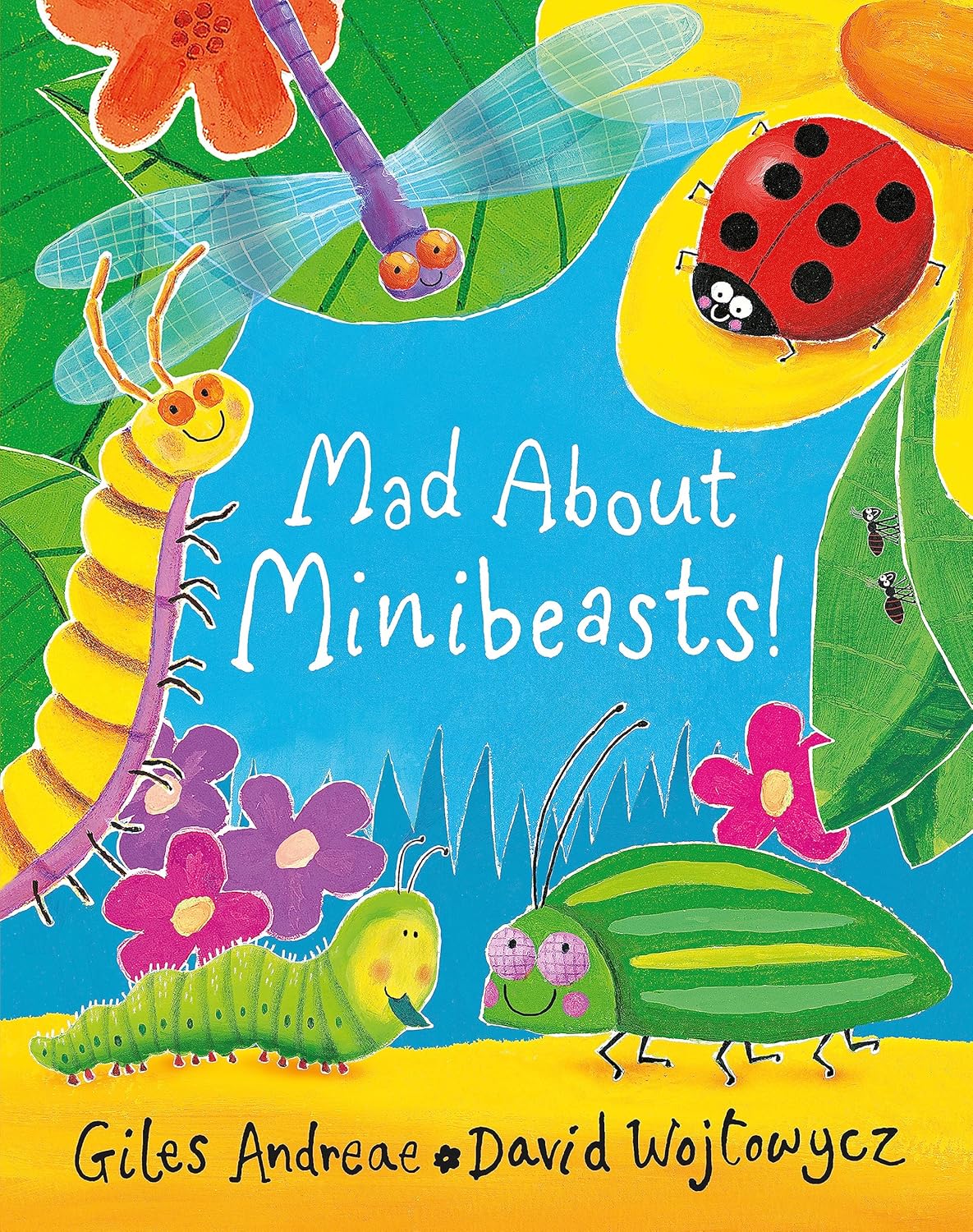Mad About Minibeasts!
- Brand: Unbranded

Description
To teach the fantastic topic of minibeasts at KS1, you can use our incredible range of minibeasts for kids UK teaching resources. Featuring minibeasts for KS1 life cycle activities, role-plays and interactive games for kids. So, now we know what minibeasts eat, what eats minibeasts? Well, as discussed before, some creatures, like spiders, will feed on other minibeasts. In addition to this, there are a wide range of animals who eat minibeasts as part of their standard diet. These animals include: Enough talk - try Twinkl's teacher-made minibeasts for kids resources today and see how much excitement they can add to your classroom! Take a look at the resources below to get started: All of these KS1 minibeasts for kids teaching resources are created by teachers for teachers and parents to use, so you can ensure that the quality of content you are getting is accurate and follows that all-important UK KS1 National Curriculum. Examples of minibeasts in the UK Having stories like these minibeast books for early years is important, since children need to read before being able to engage in the written word that’s everywhere around them.
BBC Teach has a collection of short videos for KS1 that explain the characteristics of minibeasts and insects and how minibeasts use camouflage. It is rare to find a book which gives a completely different and exciting perspective on a historical figure, particularly those aimed at younger readers, so ‘Darwin’s Super-Pooping Worm Spectacular’ is a particularly delightful read. There are some minibeasts that have particularly peculiar food habits. For instance, many types of beetles and ants eat wood, yes that’s right, wood! There are also worms that eat all of the dead materials and substances in the soil, and dung beetles, whose diet consists of actual animal poo. Whilst this might seem gross to us, these minibeasts are performing a very important function for their ecosystem. By consuming these strange things they are recycling and, in turn, improving the overall quality of the soil, which allows plants and trees to grow from it.
Discover nature as a family
They’ll start to conduct arguments for and against subjects they’ve encountered, draw on theories and conclusions, and form their own opinions and ideas. Reading will ensure that young children develop early literacy skills. Early literacy development starts within the first three years of a child's life. It supports all their other future reading, along with writing, language development, and the ability to process speech sounds. The Stag Beetle — This minibeast can grow up to 8.5 cm in length. Whilst this may seem small to us, it is massive for a beetle. Our Cautious Caterpillar eBook is a lovely story to read in your EYFS setting with an autumnal theme. This beautifully illustrated story is also available as a PowerPoint.
Generally speaking, no, the majority of minibeasts can’t swim. If they fall into a body of water, they are likely to flap around until they get out, but this is purely a survival instinct. Worms are a special case because they can technically survive underwater for several weeks at a time, as they can absorb oxygen through their skin. However, they still can’t swim. From this, they’ll be able to start building a basis around their young worlds and introduce new topics that they’d not heard of before. As they grow more and more confident with reading, they’ll be able to recognise aspects that have been read to them before, which will help them to make more sense of what they’re reading. The earlier children start to read themselves, the wider their general knowledge usually becomes. Some minibeasts, like these leaf insects, are great at disguising themselves as a dead leaf or a damaged leaf or a green leaf! Perfect for keeping themselves safe."Stories will provide the means for vocabulary growth. With a broader range of vocabulary, they’ll become both more fluent readers and writers.
Children can start to use this as an opportunity to express themselves, either verbally or in writing. Storytelling is a great way to engage young children in a relaxing and calming activity. You can use these great suggestions of minibeast books for early years children to help you plan your provisions and target skills in all seven skill development areas. Why not try some themed extension activities? You could use our Incy Wincy Spider Collection to support teaching on Keith Chapman's version of the favoured nursery rhyme. A great story is one that can teach us not just about the topic it covers but about ourselves and the world around us.Minibeasts can be found in almost every area of the UK. They are most commonly found in wooded areas, like parks for example. However, because of urbanisation it's not unusual to find minibeasts right on your doorstep. As long as they have the necessary means to live like food and a suitable habitat - minibeasts can pretty much thrive anywhere in the UK!
- Fruugo ID: 258392218-563234582
- EAN: 764486781913
-
Sold by: Fruugo
